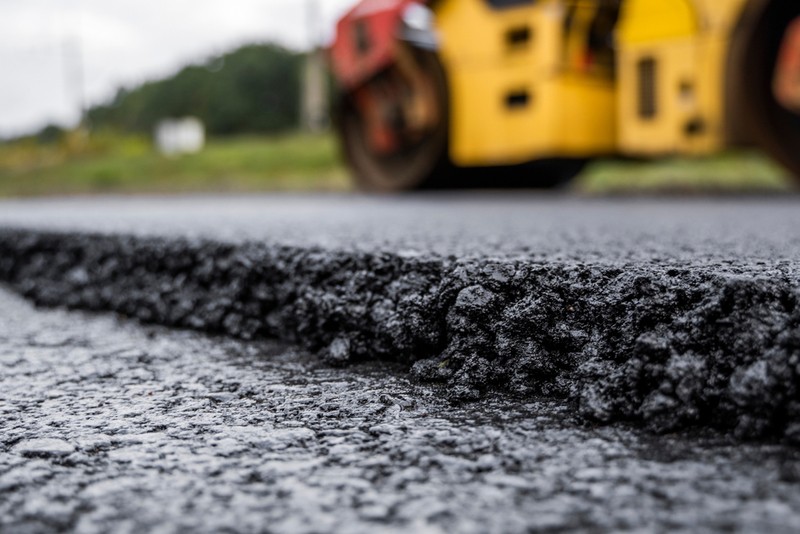Raise Security and Charm: Angled Parking Area Solutions with Asphalt Sealing
Raise Security and Charm: Angled Parking Area Solutions with Asphalt Sealing
Blog Article
Hot Mix Asphalt: A Sustainable Option for Sidewalk
Warm Mix Asphalt (HMA) has emerged as a leading sustainable option for sidewalk solutions, supplying a myriad of ingenious innovations and environmental advantages. Its capability to reuse materials and lower energy consumption offers an engaging instance for its adoption in roadway building jobs. The lasting efficiency and sturdiness of HMA make it a favored alternative for framework advancement. As the need for environmentally friendly building practices expands, checking out the subtleties of HMA's sustainability can offer beneficial understandings right into the future of pavement solutions.
Ecological Advantages of Warm Mix Asphalt

Additionally, Hot Mix Asphalt aids to minimize city heat island effects. Its dark color soaks up sunlight, lowering the amount of heat mirrored back right into the environment compared to lighter-colored pavements. This can decrease ambient temperatures in metropolitan locations, decreasing the need for a/c and ultimately lowering power intake.
Furthermore, Hot Mix Asphalt adds to enhanced stormwater monitoring. Its porous nature allows water to infiltrate the pavement and recharge groundwater supplies, decreasing runoff and the risk of flooding. These environmental benefits make Warm Mix Asphalt a lasting selection for leading roads and highways.
Energy Performance in HMA Production
Is power efficiency an essential aspect in the production of Warm Mix Asphalt (HMA)? Power plays a considerable function in the manufacturing of HMA, affecting both cost and environmental sustainability. One key element of power efficiency in HMA manufacturing is the use of warm mix asphalt (WMA) modern technologies.
Furthermore, advancements in plant technologies have actually led to more energy-efficient HMA manufacturing procedures. By optimizing energy usage in HMA production, the industry can decrease its carbon impact while keeping top notch sidewalk products.
Recyclability of Warm Mix Asphalt
The recyclability of Warm Mix Asphalt (HMA) is a critical aspect of its sustainability and long-term ecological influence. HMA is among the most recycled products in the USA, with over 100 million heaps of recovered asphalt sidewalk (RAP) being reused annually in new pavement building and construction. Recycling HMA provides several ecological advantages, such as decreasing the demand for virgin products, reducing energy intake during manufacturing, and decreasing the quantity of waste sent out to land fills.
The procedure of recycling HMA involves crushing the existing sidewalk, crushing it into smaller items, and blending it with new aggregate and asphalt binder to create a recycled mix. On the whole, the recyclability of HMA plays a considerable role in advertising lasting practices within the sidewalk market.

Long-Term Efficiency of HMA
Asphalt pavements demonstrate longevity and strength over an extended period, reflecting the long-lasting performance of Warm Mix Asphalt (HMA) The longevity of HMA can be connected to its capability to stand up to heavy web traffic lots, rough climate problems, and the effects of aging. Research studies have shown that properly designed and correctly constructed HMA pavements can last for 20 years or more with regular maintenance. The key to maximizing the long-term efficiency of HMA hinges on using top notch products, complying with ideal methods in building, and applying reliable upkeep approaches. Correct drain, regular inspections, and timely repair services are vital for maintaining the structural integrity of HMA sidewalks over time. In addition, developments in HMA modern technology, such as making use of polymer-modified image source binders and warm mix asphalt, have further enhanced the resilience and long life of HMA pavements. By focusing on top quality building and construction and maintenance methods, HMA remains to show itself as index a lasting and economical solution for long-lasting sidewalk framework.

HMA: Sturdiness and Sustainability
Showing both toughness and sustainability, Hot Mix Asphalt (HMA) has actually come to be a keystone in the building and construction of lasting sidewalk infrastructures - commercial parking lot paving. HMA's durability comes from its ability to stand up to hefty tons, severe weather condition conditions, and high web traffic quantities, making it a trustworthy selection for streets, freeways, and airport terminal runways. The make-up of HMA, which usually consists of aggregates, binder, and filler, plays an essential role in enhancing its long life and resistance to tear and put on
Moreover, HMA's sustainability hinges on its recyclability and energy-efficient manufacturing process. The ability to reuse reclaimed asphalt pavement (RAP) in new HMA mixes reduces the demand for virgin products and lessens the environmental effect of pavement building and construction and upkeep. Furthermore, the energy efficiency of creating HMA depends on its reduced blending temperature levels contrasted to other sidewalk products, causing reduced energy consumption and greenhouse gas emissions.
Conclusion
In final thought, hot mix asphalt (HMA) provides a lasting option for sidewalk with its eco pleasant features. HMA's recyclability, power performance in manufacturing, and lasting durability make it an eco-friendly choice for road construction.
HMA is one of the most recycled products in the United States, with over 100 million heaps of reclaimed asphalt pavement (RAP) being reused annually in brand-new pavement building.The process of reusing HMA involves grating the existing sidewalk, crushing it into smaller sized pieces, and mixing it with brand-new aggregate and asphalt binder to develop a recycled mix.Asphalt pavements show longevity and strength over an extensive duration, reflecting the long-term performance of Hot Mix Asphalt (HMA) Furthermore, advancements in HMA technology, such as the usage Continued of polymer-modified binders and warm mix asphalt, have additionally enhanced the durability and longevity of HMA sidewalks. The ability to recycle recovered asphalt sidewalk (RAP) in new HMA mixes lowers the demand for virgin products and reduces the ecological influence of sidewalk building and upkeep.
Report this page